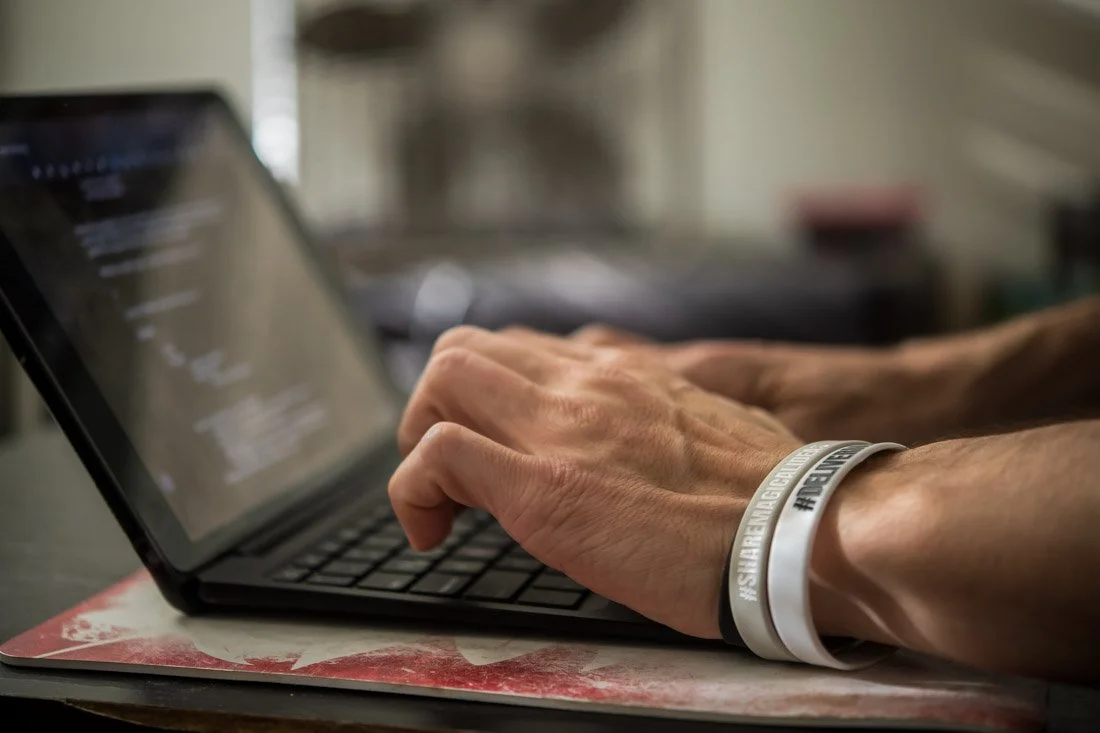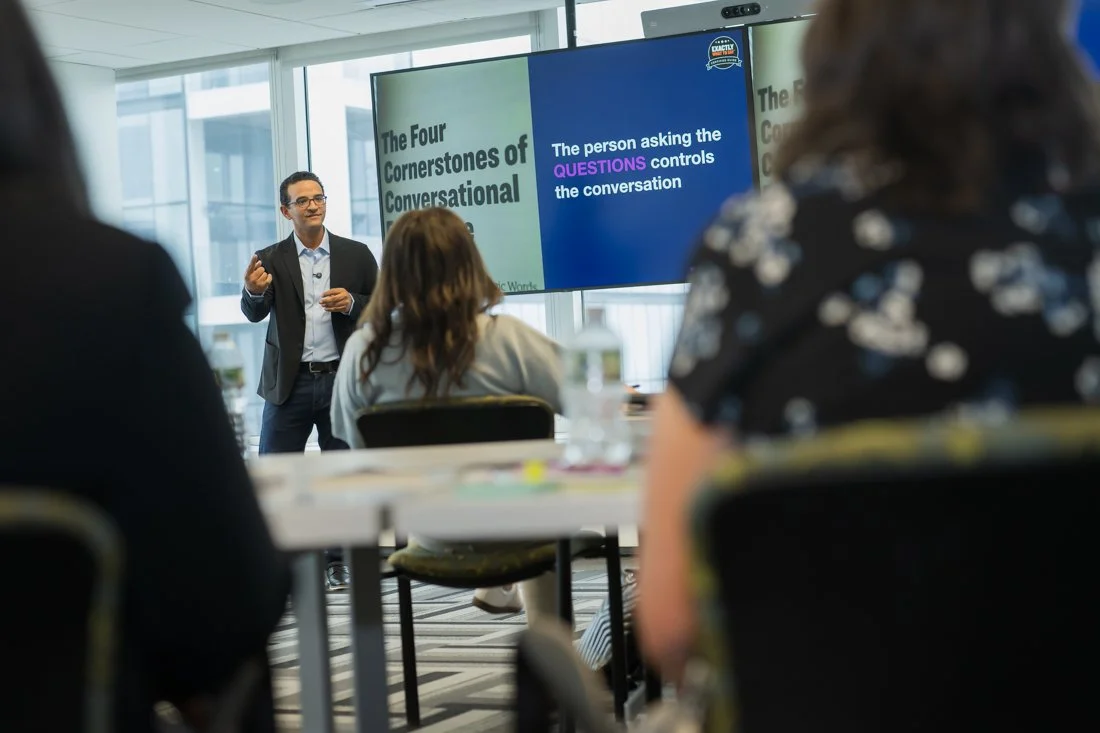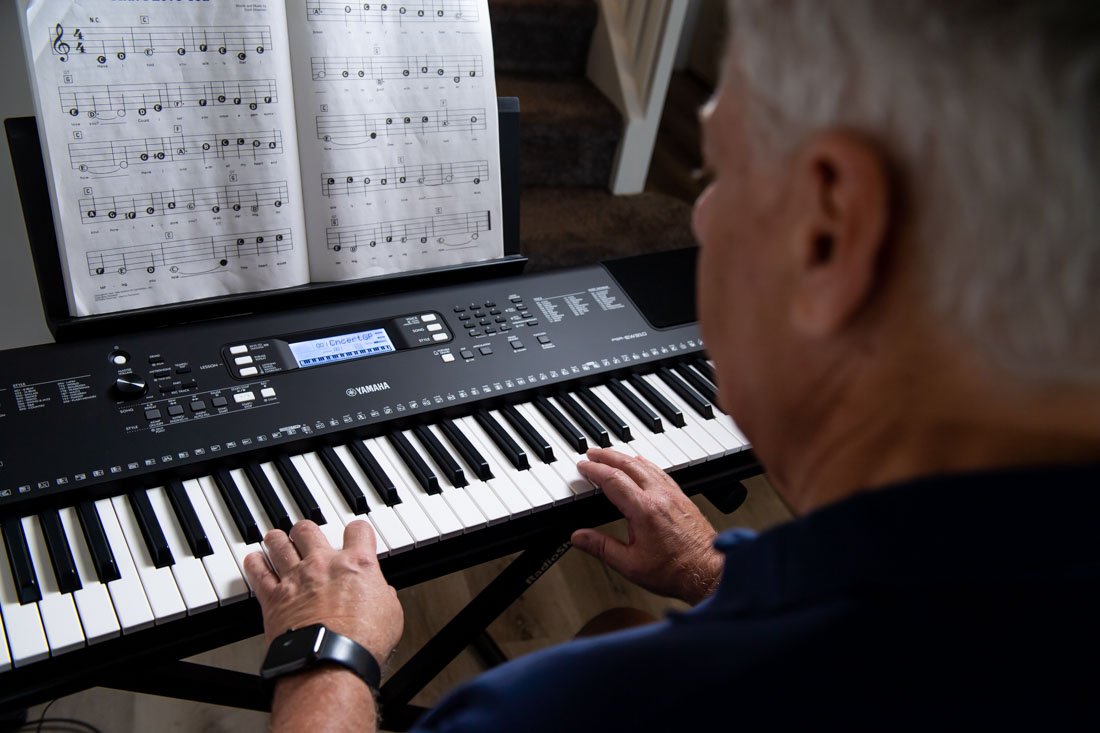Your Brand's Silent Power: How Visuals Sway Decisions Before You Speak.
For any Founder or Expert leading a brand today, there’s a marketing conversation happening about them and their business that they aren’t even aware of.
It’s a silent, rapid-fire assessment conducted in fractions of a second, influencing decisions before a single word of a pitch, a proposal, or a sales page is ever consciously registered.
This conversation is driven by the shortcut psychology behind visual decisions.
It’s the reason a potential investor might dismiss a brilliant tech founder, or a high-value client might overlook a game-changing consultant.
Not because of a flawed product or lack of expertise, mind you, but because their visual presence failed a primal, instant classification test.
They were utterly confident their meticulously researched product, their top-shelf pitch, and their rock solid business plan would speak for themselves. What they didn’t realize is that the conversation was over before it began - derailed by a force more powerful and less logical than any spreadsheet bottom line could explain.
This isn’t about “pretty photos.” It’s not about subjective taste, or some fancy art show critique.
This is about neuroscience and human survival.
Understanding Cognitive Economy - Your Brain’s Favorite Shortcut
Decades ago, Dr. Robert Cialdini, in his book Influence, gave us some serious insights into how our automatic, almost unconscious decision-making processes really work.
What Cialdini concluded, at its core, is the concept of cognitive economy.
Long story short, our brains are wired to conserve mental energy. They’re constantly making snap judgments based on minimal cues to minimize decision fatigue.
Our ancestors didn’t have time for a detailed SWOT analysis, a curated focus group, or an online survey to determine the threat of hearing a rustle in the bushes or a faint growl in the distance. They needed instant classifications: friend or foe? Safe or risky? Survive or… represent an apex predators’ dinner and potential morning leftovers?
That primal wiring still runs the show for us today, especially in our hyper-visual, fast-scrolling attention economy world.
When someone happens to land on your brand – whether through LinkedIn search, website research, media kit, or just a quick social post – they’re not conducting a full-blown detailed, conscious analysis.
They’re skimming. They’re distracted. They’re busy. They’re making instant classifications based on these visual “trigger features.”
Your Visuals: The Ultimate Automatic Trigger System
And this is exactly why a strategic visual approach is an absolute game-changer. Your visuals aren't just a nice design choice; they are powerful, pre-conscious trigger systems that instantly categorize you and your brand. They’re the fast-pass to building visibility, connection, credibility and trust.
When someone encounters your brand online, their brain is scanning for cues.
Consider first what a Core Asset, a captivating headshot or wider portrait, triggers.
When someone encounters that carefully cultivated blend of artistic intention, genuine expression, and polished execution in your primary visual representation, it creates an intoxicating mixture.
It whispers, “This person knows what they’re doing. Not just in front of a camera, but with their entire operation. They pay attention to the smallest details. They take their craft, their message, and their audience seriously. And if they care that much about their image, they’ll care that much about me and my business.”
That's a powerful and immediate statement of professionalism, confidence, and approachability. It’s a visual pattern interrupt that commands respect.
Next, another immediate pattern interrupt involves capturing you in the act of serving your people. This is where your visuals prove you're not just speaking theory.
Imagine a photo of you, perhaps intensely coaching a client in a one-on-one session, guiding a founder through a complex deal room, or leading a high-level strategic workshop with demonstrable engagement.
Real tangible photos like this convey something profound and grounded in reality that carefully staged stock photos or AI-generated images just can't touch.
It cuts through the noise and declares, “This person is real. They’re not just talking the talk - they’re doing the work. I can see them in their element, making an impact. They’re trustworthy because they’re transparent. I can relate to that kind of dedication.”
It creates an instant, credibility-driven connection that builds bridges faster than any meticulously written bio or Trusted By section on your website. This visual pattern interrupt builds immediate, undeniable proof of your hands-on service and expertise.
And then, to truly differentiate and deepen connection, there are the “Yes And’s” that go beyond the work itself.
This is about those carefully chosen visual glimpses that reveal a piece of your private world, your passions outside the professional sphere. When your visuals reveal genuine, subtle human elements, they bypass the intellect and hit the heart.
It whispers, “This person is real. They're not just selling; they feel. They have a life beyond their work. I can connect with them on a deeper, more human level. I trust their humanity.”
It helps balance out all the professional intensity, rounding out the story of you as a relatable human being. This genuine peek into your wider self is another intentionally crafted pattern interrupt. It's what makes you unforgettable on a truly personal level.
The genius—and the absolute game-changer for your brand—is that these visual shortcuts happen before conscious thought. Someone scrolls through LinkedIn, sees your image content, pauses, and in milliseconds, their brain has already categorized you as “approachable,” "credible expert," or "relatable human being" before they even read your caption, your bio, or your meticulously crafted offering.
Conversely, if your visuals are sloppy, inconsistent, or generic, their brain has just as swiftly categorized you as "unreliable," "unprofessional," or "just another face." As a result, you then have to work exponentially harder to disprove that first impression with every subsequent word you write or action you take.
Don't make it harder than it needs to be.
By consistently and strategically breaking through the noise in these ways, you naturally shift from being one of many in a crowded market. You begin to automatically own a unique, pre-verified mental category in your client's mind.
A category of one.
Value Beyond The ROI Numbers
The immediate benefits of this approach create an undeniable justification for Founders and Expert-business owners to be more intentional with their visual storytelling.
It clarifies, at a fundamental, human brain-wiring level, why the investment isn’t merely a “check-the-box-once-every-three-years” consideration. Instead, it’s an on-going, foundational investment that directly fuels multiple critical functions across their entire business.
It’s the reinforced concrete in the foundation of the house, not the cute loveseat you fell in love with at West Elm last weekend.
No, the value of strategic visuals isn’t always quantifiable on a spreadsheet with a clear percentage of growth, but that’s precisely why it’s so incredibly powerful.
Its impact happens way upstream, influencing whether a prospect even considers opening your website, reading your pitch, clicking on the CTA button to learn more or setting a Zoom meeting.
It reduces friction. Your audience’s brain is looking for the path of least resistance. Smart, effective visuals make it easier for a prospect to trust you, to relate to you, to give you their time. This is influence in action.
It accelerates trust. Subconscious trust is built quickly and visually, long before conscious analysis even begins.
It secures attention. Distinct, high-quality visuals act as an automatic “pay attention here!” signal in our incredibly noisy world.
The cost of not leveraging this shortcut psychology? You lose opportunities you never even knew you had.
It’s forcing your ideal clients’ brains to do more conscious mental work, creating barriers to entry, and ultimately losing them to competitors who are sharper, who are visually aligned with those all-important subconscious triggers.
Strategically Audit Yourself
To truly harness this important insight into the way the mind works, ask yourself some critical questions:
If you landed on your own professional visuals - your headshot, your lead image, your social post photo - through a Perplexity or LinkedIn profile search, would you genuinely stop, click, and feel compelled to learn more? Would your own visuals make you believe, instantly, this is someone worth following, someone you need to hear from, someone who can help you?
What automatic assumptions do people make about your business and your leadership purely based on visual first impressions? We’re talking about those gut feelings that happen long before logic kicks in. Do you like what those assumptions are saying?
How are you intentionally designing visual shortcuts that lead to your desired client responses before they read a single word of your intentionally crafted copy? What specific visual elements are you deploying everywhere to ensure their brain automatically labels you as "approachable," "credible expert," or "relatable human being" within that first split-second?
What unique visual shortcuts could you create or amplify that would instantly position your brand as a market of one in your space? This is about innovating your visual fingerprint so distinctively that you become THE option in the minds of your customers and clients.
Your Visual Story is An Imperative, Not an Afterthought
Strategic visual storytelling is a powerful, yet silent, negotiator.
It’s that subconscious nudge that either earns you immediate attention and trust, or quietly and swiftly dismisses you into the void, long before your conscious message even has a chance to be processed and digested.
You've just invested the time to dig deep, to honestly audit where your visual narrative stands. You've seen the gaps, felt the potential. You understand the undeniable leverage of shaping that subconscious whisper.
So, what now? This isn't about guesswork anymore. It's about designing your visual future with intention and strategic precision. Whether you're ready to define your distinctive visual fingerprint, or you're finally done leaving those critical first impressions to chance, the time to act is now.
What's the one visual assumption you're most eager to transform about your brand? Drop your insight in the comments below.





